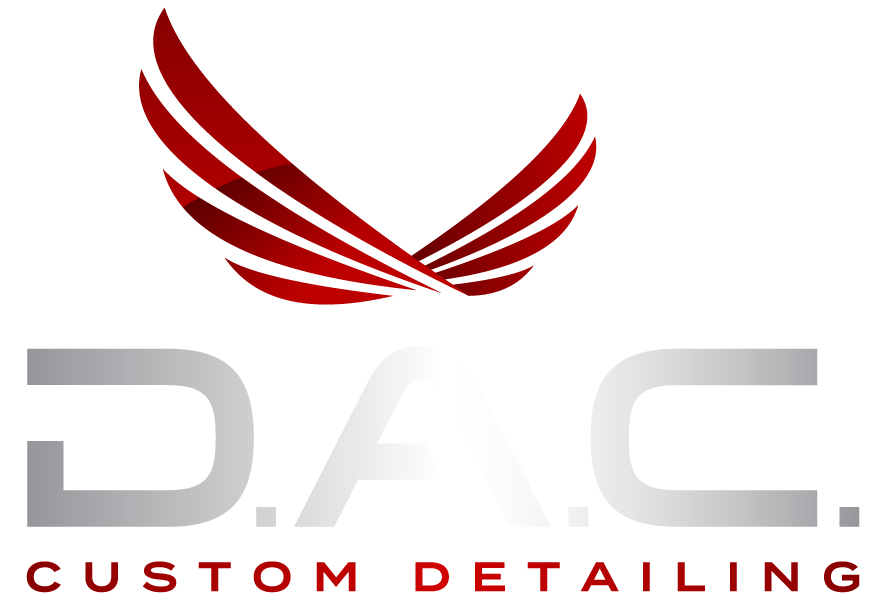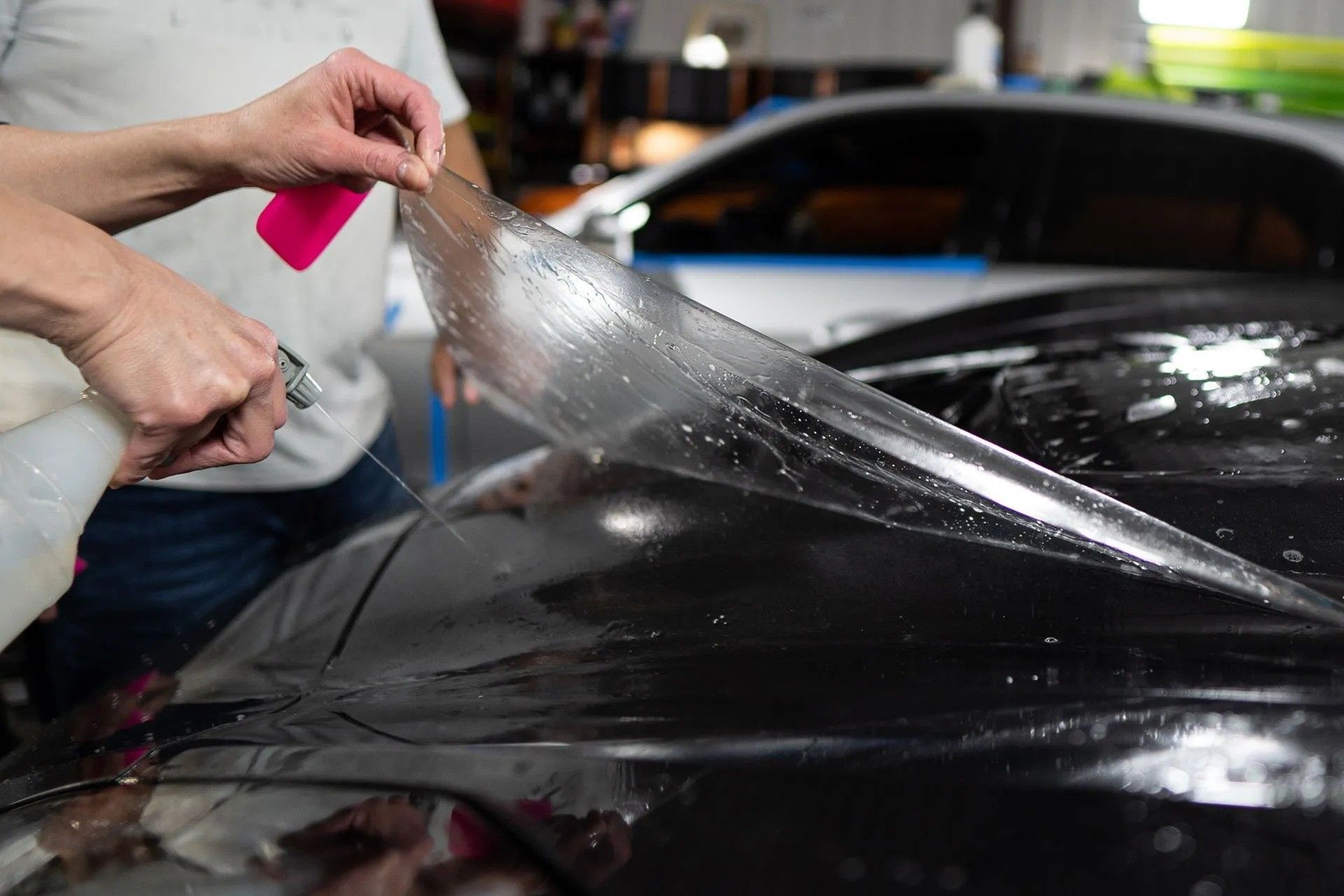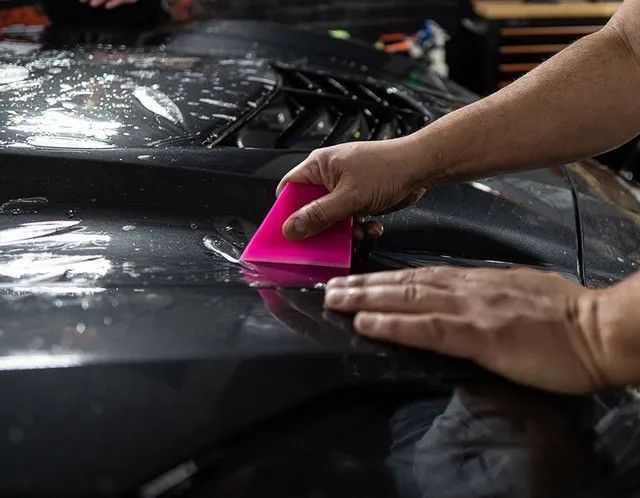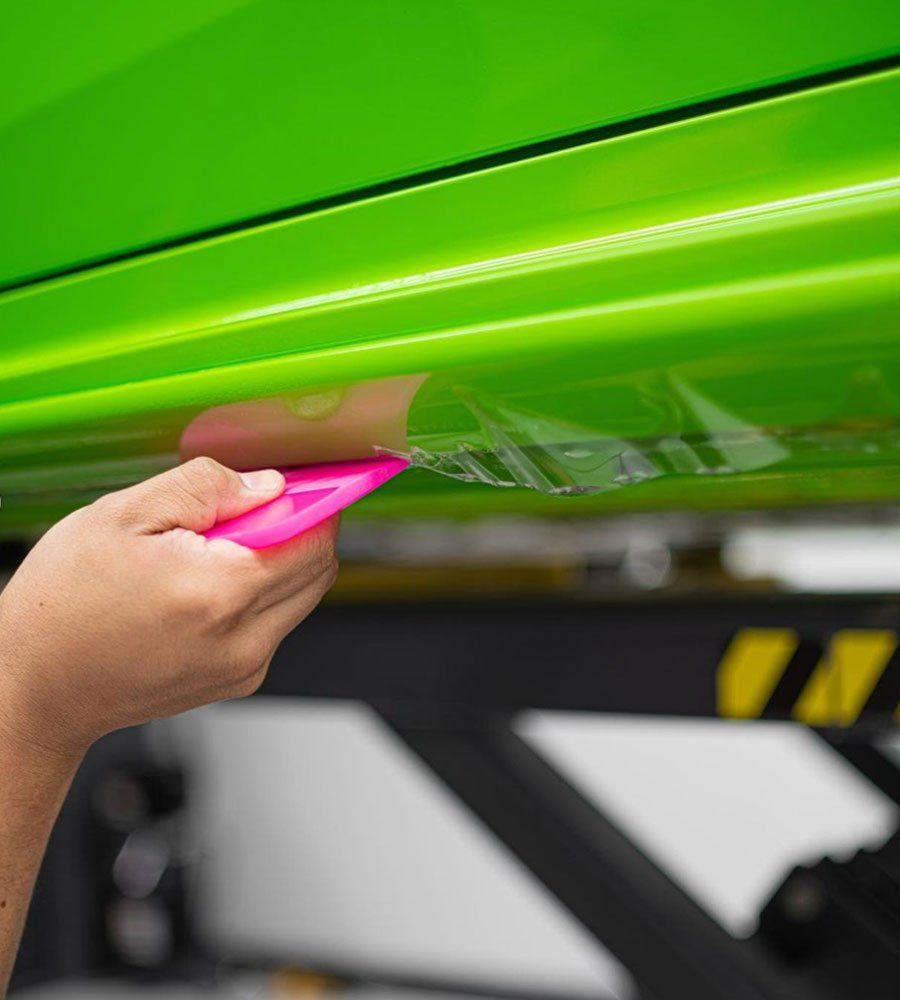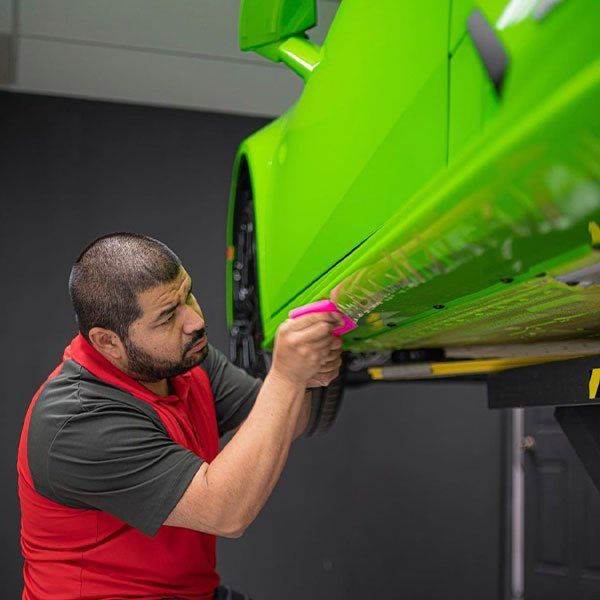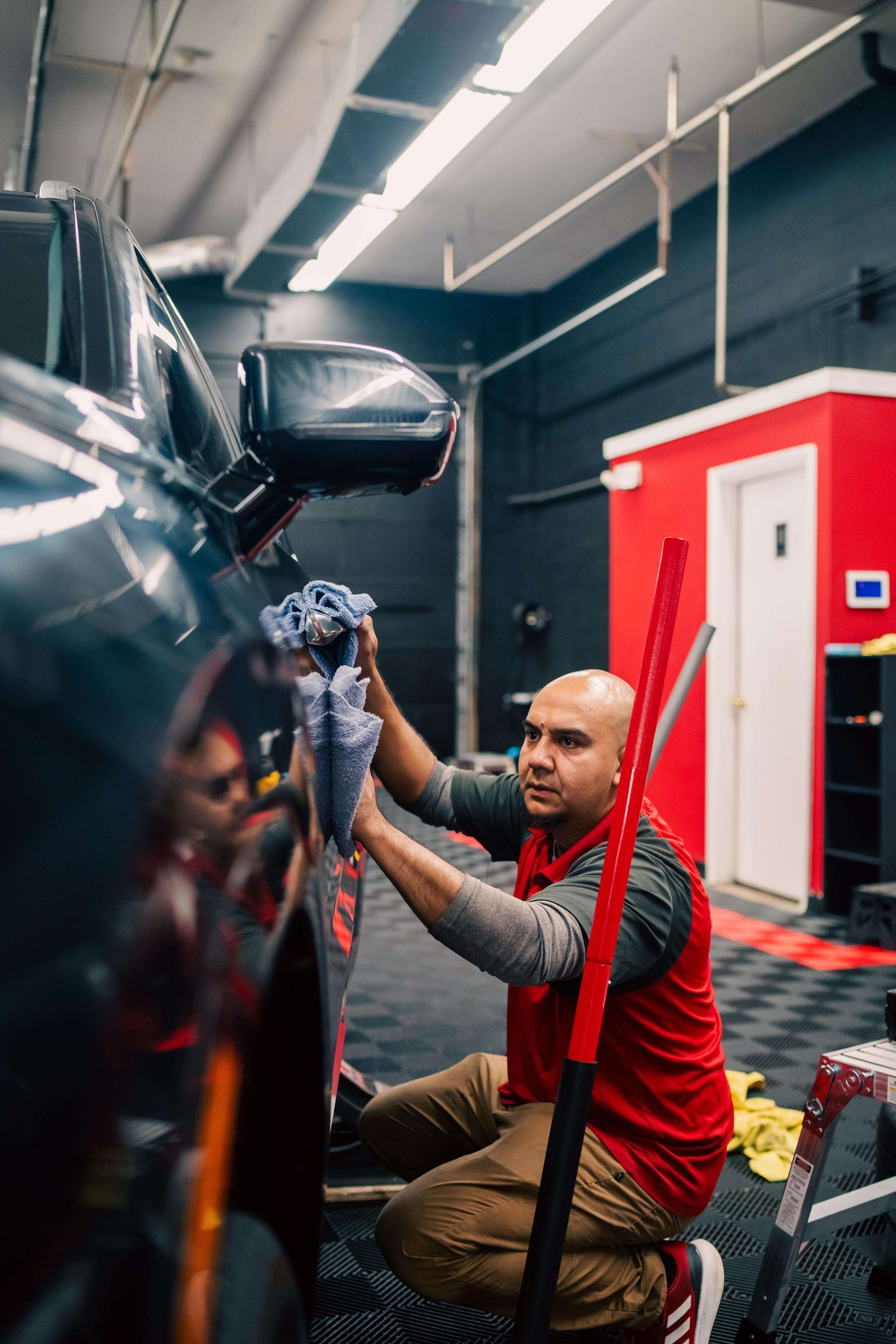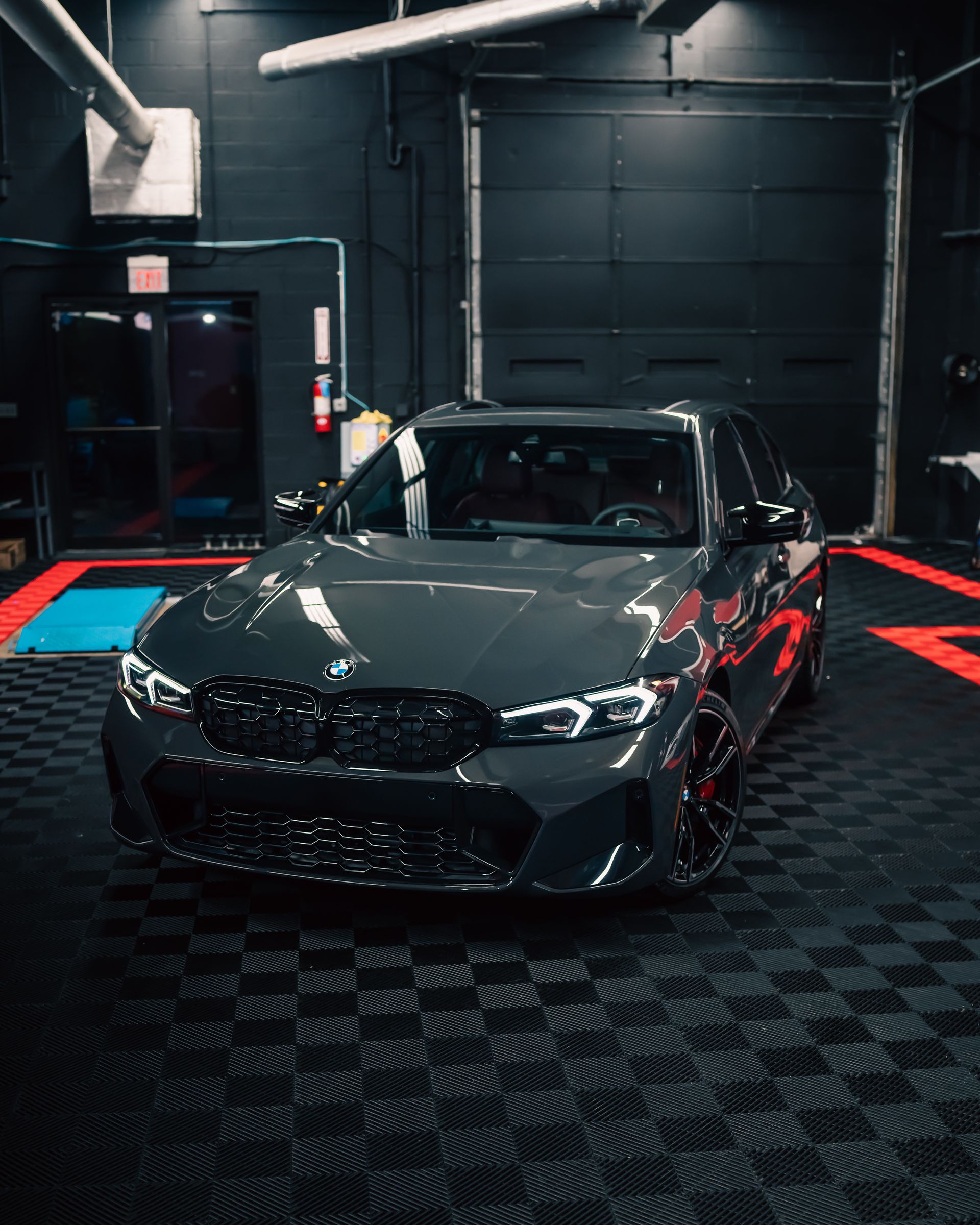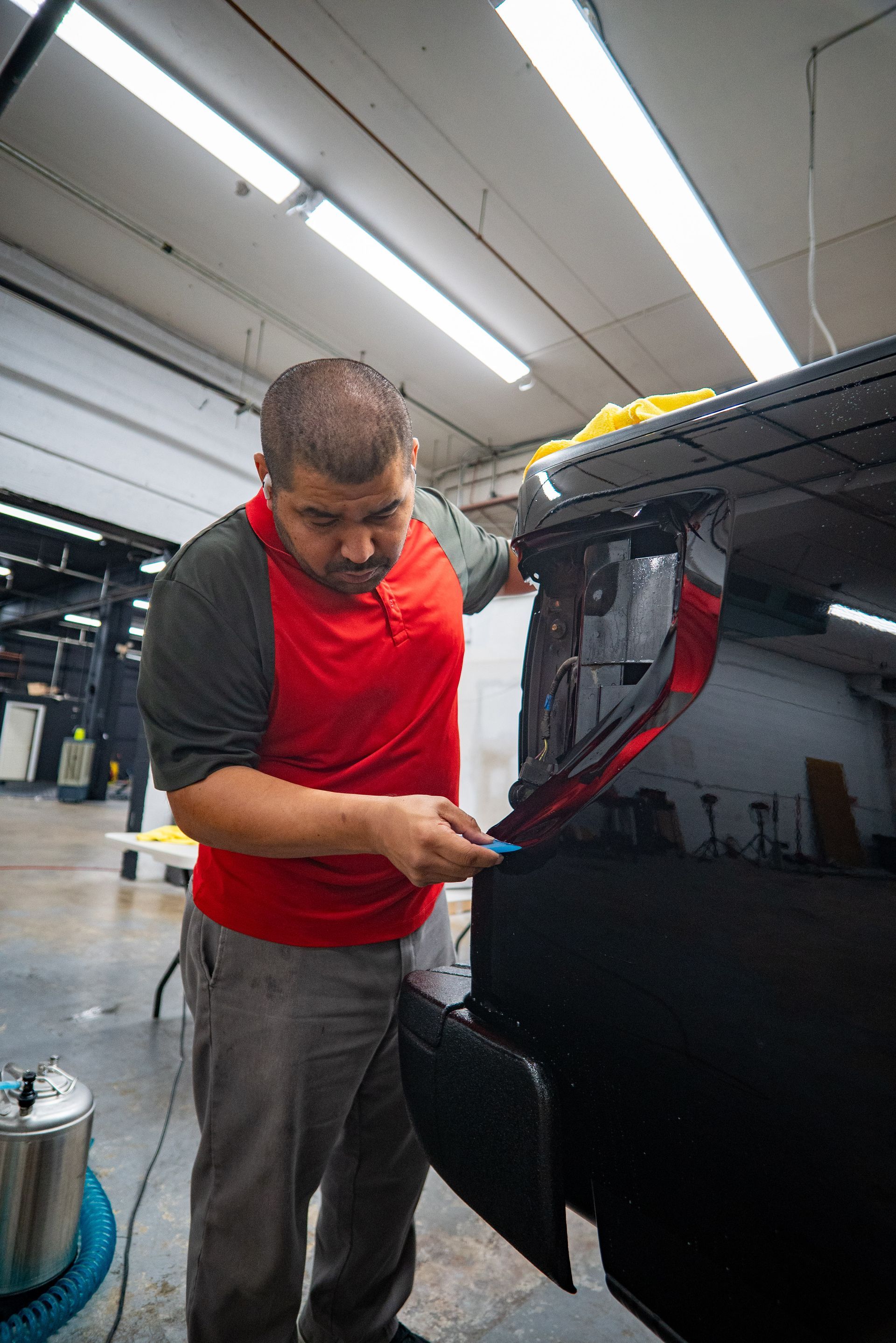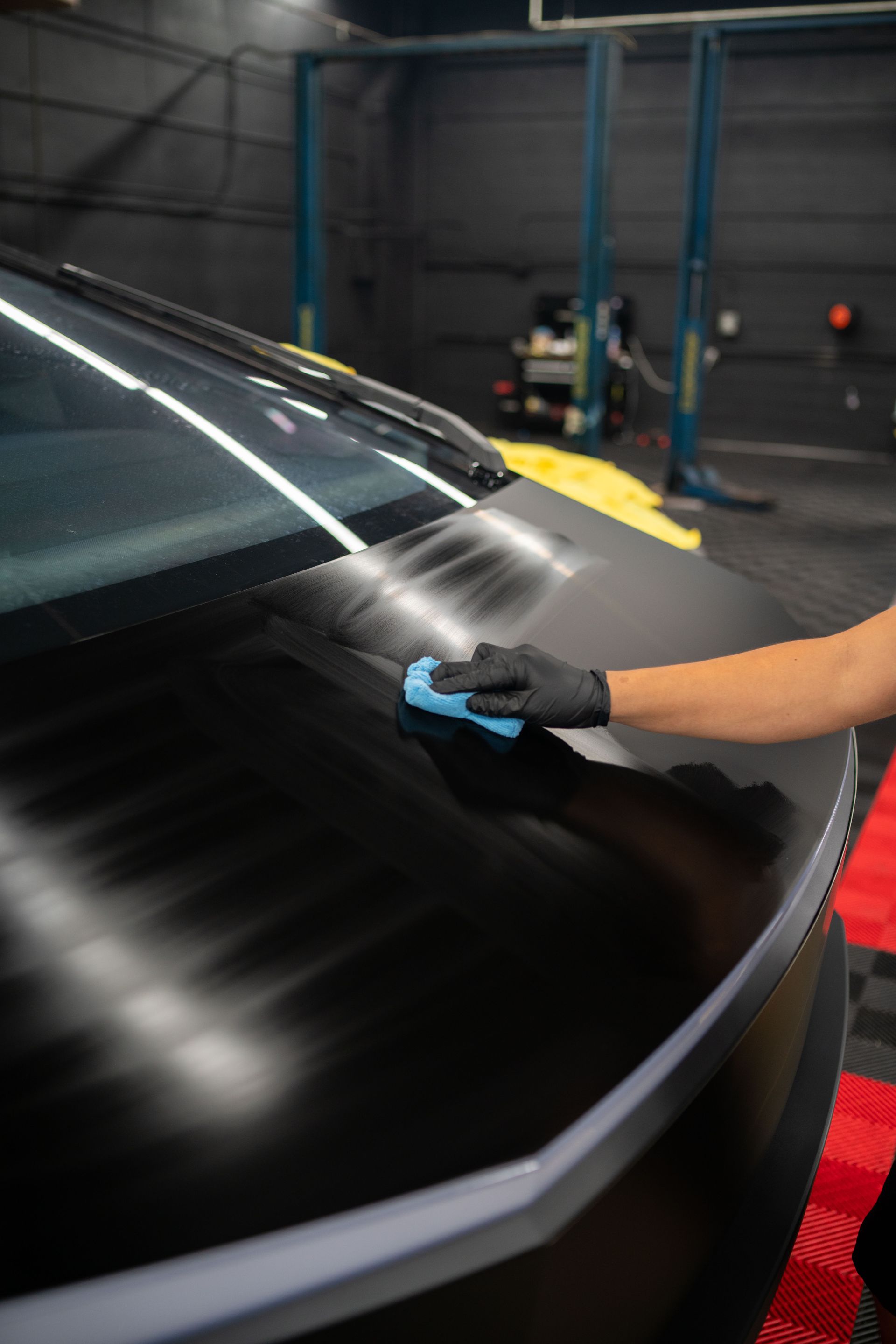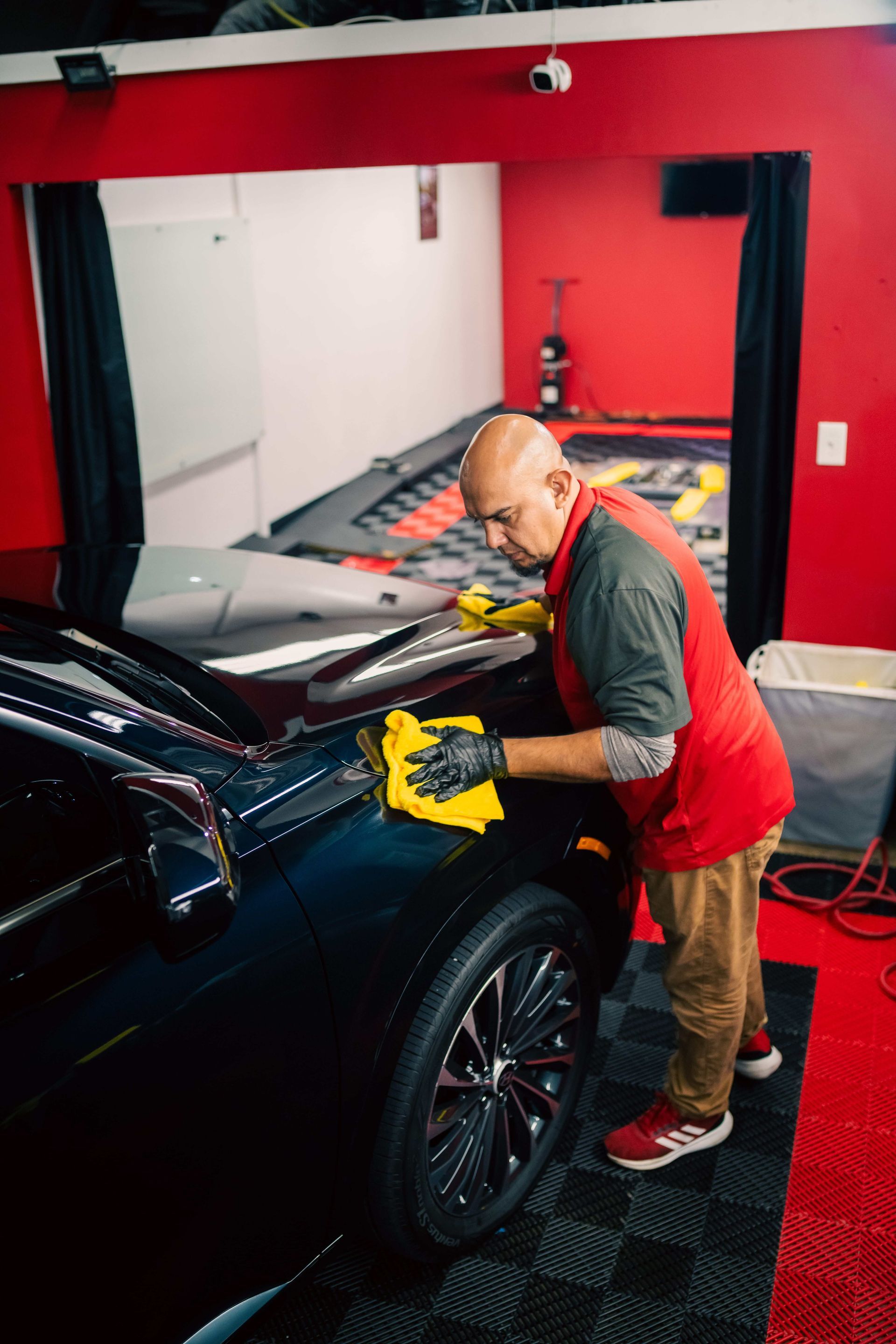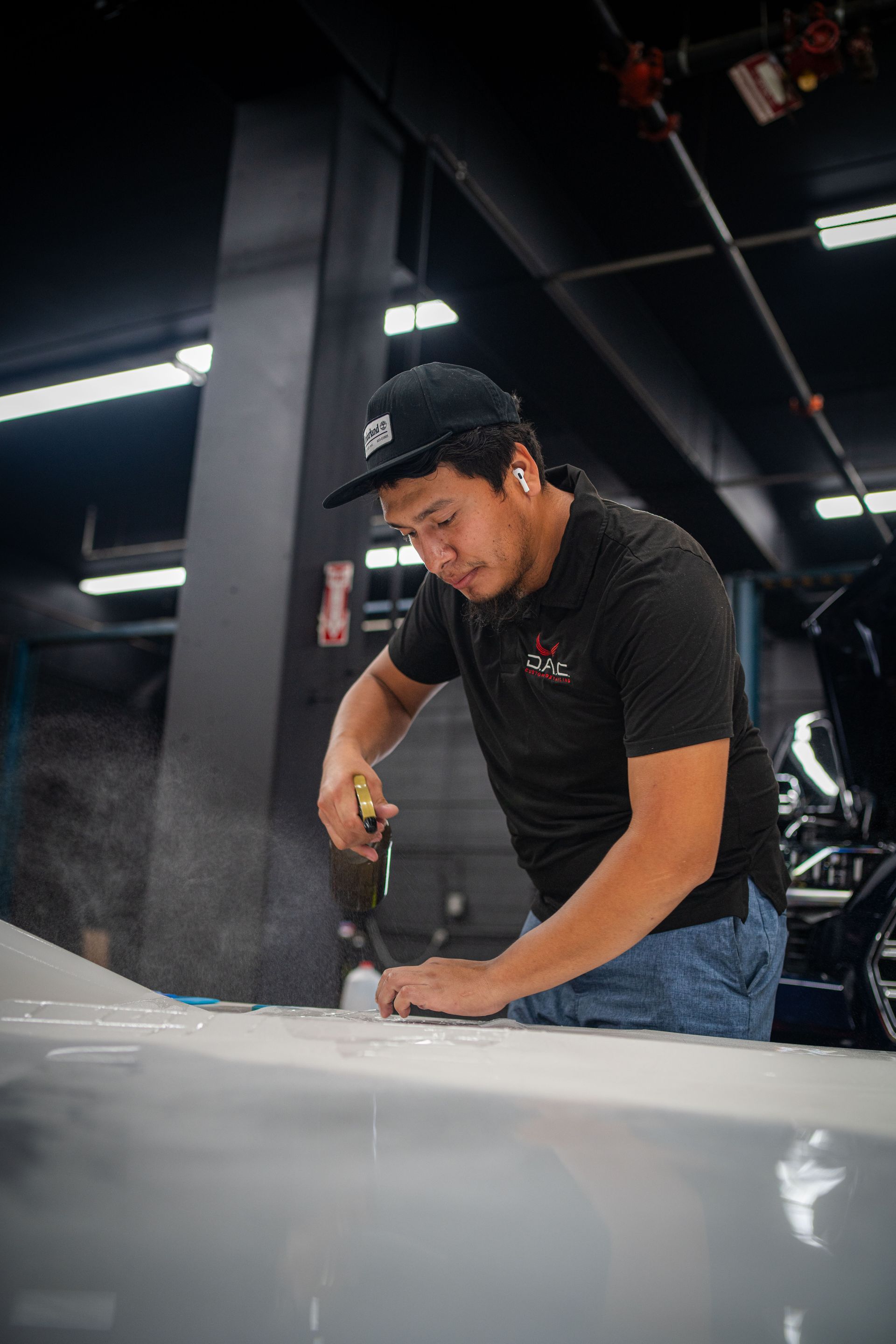REVIVE, PROTECT, MAINTAIN
Yes, indeed. Paint protection film, a clear film placed on the outside of your car, can guard your car's paint against harm. Its main duty is to act as a barrier against rough chemicals like road salts and harmful dust, which can cause etching. This might surprise you, but PPF has a unique ability to self-heal minor scratches and resist UV light, preventing fading colors. Thanks to these safety features, your ride gets an extra layer of security against mean city streets full of harsh substances. Now, let's delve into what paint protection film is in detail.
Paint protection film acts as a barrier against environmental stressors, including harsh chemicals, to prevent paint etching. The self-healing properties of PPF help maintain the original vibrancy of the paint and protect it from chemical damage, effectively preserving the aesthetics and resale value of the vehicle over time.
Understanding PPF and Its Protective Qualities
Imagine a shield that wraps around the surface of your vehicle, protecting it from unexpected dangers. That's exactly what paint protection film does. This unique film acts as a transparent barrier, safeguarding your car's paint from road debris, bug splatter, stone chips, and minor abrasions. Its application has become increasingly popular for vehicle owners who want to preserve the aesthetics and longevity of their vehicles' exteriors. The secret lies in PPF's advanced construction - a thermoplastic urethane film that possesses incredible properties. It not only shields against physical impact from stones and bugs but also stands strong against environmental elements such as UV rays, moisture, and temperature fluctuations.
PPF Key Benefits
- Self-Healing Properties: PPF materials are engineered with self-healing capabilities, effectively repairing minor blemishes caused by small impacts or scratches.
- UV Resistance: A paint protection film acts as a shield against UV rays, preventing the vehicle’s paint from fading and maintaining the original vibrancy of the colors.
- Durable Construction: The film is built to endure environmental stressors encountered during daily driving, including moisture-laden air, hot and cold temperatures, and varying weather conditions.
Consider this - you're cruising down the highway when a rock flings up and hits the hood of your car. Without a paint protection film, this could result in a visible chip or scratch on your once flawless paintwork. However, with the protective layer of PPF in place, the film absorbs the force of the impact, reducing the risk of damage to the underlying paint. It's like having invisible armor that wards off potential harm. You see, a paint protection film doesn't just stop at preventing physical damage from road hazards; it goes a step further by providing comprehensive protection against a range of threats - from everyday wear and tear to unforeseen encounters with harsh chemicals.
The Science of Paint Protection Film
If we were to dive deeper into this protective marvel, we'd find that its chemical composition plays a pivotal role in its effectiveness. For instance, PPF's advanced materials resist damage from environmental elements like road salt, sand, and other abrasive substances that your vehicle encounters during daily drives. Essentially, its robust nature shields your car from both physical and chemical threats. A paint protection film extends the defense beyond rocks and debris to include UV rays, moisture, and temperature fluctuations.
PPF's Resistance Against Harsh Chemicals
Paint protection film acts as a transparent shield for your vehicle, providing an effective defense against various contaminants. From acidic substances to road salts and industrial fallout, the film serves as a robust barrier, preventing direct contact with the vehicle's paint. This is essential in minimizing the risk of etching or discoloration caused by these harsh chemicals. Imagine your car navigating through city streets or industrial areas, exposed to a barrage of harmful substances on a daily basis. The PPF provides a much-needed protective layer, shielding the paint from the detrimental effects of acidic contaminants often found in urban environments. Without this shield, your car's paint would be at risk of suffering irreversible damage over time.
For instance, road salts used during the winter to melt ice and snow can wreak havoc on your car's surface if left unprotected. These salts are highly corrosive and can cause significant damage, leading to pitting or discoloration. However, with a paint protection film in place, the film forms an effective barrier against these corrosive substances, preserving the integrity of the paint. The film's resistance against industrial fallout ensures that pollutants emitted by factories and industrial processes do not compromise the quality of your car's exterior. Without this added layer of protection, these pollutants could gradually eat away at the paint, causing irreversible damage over time.
So, while PPF is often seen as a means to protect against physical abrasions such as rock chips and scratches, its ability to resist chemical damage is equally significant. This resistance is particularly valuable for vehicles regularly exposed to urban and industrial environments where these harsh chemicals are prevalent. The impressive chemical resistance of this protective film not only safeguards your vehicle's paint but also extends its visual appeal over time. It's clear that the protective qualities of PPF go beyond just physical durability—chemical resistance is a crucial aspect of its functionality. Understanding how paint protection film actively shields your vehicle’s aesthetics and structural integrity sets the stage for our next exploration—the meticulous application process of PPF for maximum defense.
Application Process of PPF for Maximum Defense
The initial step in applying paint protection film involves a thorough cleaning of the vehicle's surface. This ensures there is no dirt, dust, or residue that could interfere with the adherence of the film. Visualize how, when you're trying to put stickers on a surface, if there's any dust or gunk underneath, it doesn't stick properly. The same principle applies here.
Subsequently, comes the precise cutting of the film to fit the specific contours of your vehicle. Regardless of whether you're driving a sleek sports car or a rugged truck, each curve and edge needs to be accounted for to ensure full coverage and protection. Just like making a tailored suit, cutting PPF requires expert hands who know exactly how to measure and trim it. This custom fit prevents any areas from being left exposed and vulnerable to damage. Once the film is precisely cut, it's carefully applied using specialized tools. This part is critical because improper installation can lead to air bubbles or edges lifting over time, which not only looks bad but also compromises the protective function of the film itself.
Imagine this as putting on a screen protector on your phone - if there are air bubbles or if it's not aligned properly, it can be frustrating and affect the functionality. The same goes for PPF - improper application can compromise its effectiveness in shielding against environmental stressors. Proper installation is essential not only for achieving maximum defense for your vehicle's paint but also for ensuring seamless coverage and long-term adherence to the vehicle's surface. The precise nature of the application process ensures that every nook and cranny of your vehicle is covered with the PPF, offering a shield against rocks, debris, UV rays, moisture, and temperature fluctuations over an extended period.
PPF's Role in Preventing Paint Etching
Paint etching poses a significant threat to maintaining a vehicle's pristine exterior. Harsh chemicals like bird droppings, tree sap, and industrial pollutants can wreak havoc on a car's paint, causing unsightly blemishes and corrosion. This is where PPF truly shines as a defense mechanism. Imagine your car covered by an invisible shield that absorbs the impact of these chemicals, preventing them from doing any harm to the paint beneath. This is precisely what paint protection film does. Acting like a sacrificial layer, PPF takes the hit and shields the original paint from unwanted discoloration and damage.
The Protective Barrier
PPF serves as an impenetrable barrier between the harsh external elements and your vehicle's precious paint. It effectively mitigates the risk of etching, preserving the color and shine of the surface for years to come. For instance, acidic bird droppings can cause paint etching within minutes of contact. If left unaddressed, these blemishes can become permanent and significantly degrade the appearance and value of your vehicle. However, with a paint protection film in place, you have an added layer of defense against such corrosive substances. This protective barrier from PPF goes beyond just preventing immediate surface damage. It acts as a long-term investment in the upkeep of your vehicle's appearance and resale value.
Extending Lifespan and Aesthetics
PPF isn't just a temporary fix; it's a proactive measure that extends the life and aesthetics of your vehicle's paint finish. By safeguarding against paint etching, discoloration, and corrosion caused by chemical exposure, it helps preserve the original vibrancy of your car's exterior. Consider road salt, for instance—a notorious culprit for causing paint damage during the winter. With a paint protection film in place, you can minimize the risk of corrosion resulting from prolonged exposure to these environmental stressors. Understanding PPF’s pivotal role in preventing paint etching underscores its indispensable contribution to long-term preservation and protection of your vehicle's exterior.
Maintenance Tips for PPF Longevity
Imagine you've just installed protective film on your car. It looks great and gives you peace of mind knowing that it's safeguarding your vehicle's paint from external elements. But to ensure the PPF continues to do its job effectively, regular maintenance is key.
First things first, when it comes to cleaning the paint protection film, always opt for a gentle approach. A mild car shampoo mixed with water works perfectly to cleanse the film without causing any damage. Using a microfiber cloth for hand drying ensures that no abrasive materials make contact with the film. Think of it as treating your beloved vehicle to a soothing spa day! It's crucial to avoid using abrasive cleaners or compounds on the PPF, as these could deteriorate its protective properties over time. Just like how we carefully choose skin products that suit our specific needs, treating your paint protection film with care preserves its integrity and enhances its longevity.
In addition to regular cleaning, scheduling periodic inspections is equally important. These inspections are like health check-ups for your car's protective shield. By keeping an eye out for any signs of wear or damage, you can address potential issues promptly before they escalate and compromise the film's protective capabilities. With these simple yet effective maintenance measures, not only can you prolong the lifespan of your PPF but also ensure continued protection for your vehicle's paintwork! By implementing these maintenance tips, you're ensuring that your investment in paint protection film remains effective and preserves the aesthetics of your vehicle for years to come.
Top-Notch PPF Services in Temple Hills, MD
Enhance your vehicle's defense with D.A.C. Custom Detailing's
top-notch paint protection film services in Temple Hills, MD. Our skilled professionals use cutting-edge technology to apply a virtually invisible layer that shields your car from scratches, chips, and environmental damage. Enjoy the peace of mind that comes with knowing your vehicle's paint is safeguarded while maintaining its pristine appearance. Contact D.A.C. Custom Detailing today to book your appointment and invest in superior protection for your car. Call us at
(703) 298-1864 to get started!
